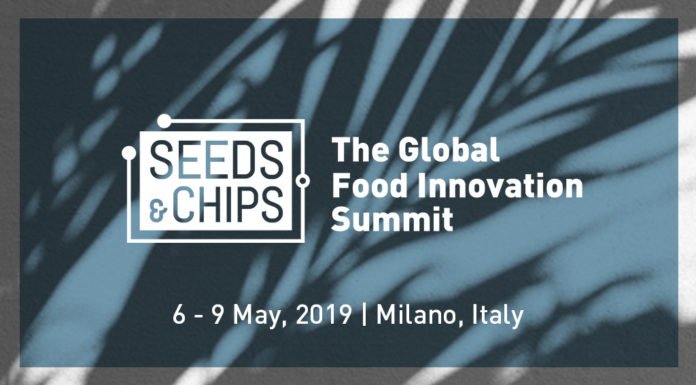MILAN, MAY 6 – “Agricultural innovation can have a pivotal role in creating a world free of hunger”. This message was delivered by FAO today to participants of Seeds and Chips Global Food Innovation Summit where the UN agency also showcased some of its innovative solutions for sustainable agriculture.
“Agricultural innovation is a lynchpin that can radically transform food systems, provide agri-preneurship opportunities and jobs for youth and rural women, and boost national economic growth,” said FAO Deputy Director-General for Climate and Natural Resources Maria Helena Semedo, who spoke at a SDG-focused session at the event in Milan.
Semedo also stressed the need to move to more sustainable agriculture food systems by changing how we grow, share, prepare and consume our food, calling on governments to establish rules and standards to promote healthy and nutritious foods.
“The world needs a global pact against obesity that embraces traditional and local foods. Adopting global healthy diet standards would also curb the proliferation of poor diets that have seeped into our modern lifestyles,” said Semedo.
“We really have come a long way. But somehow, our own progress seems to be our downfall-we learned how to cultivate food, but the abundance of what is on our table is slowly killing us. Unhealthy diets are the world’s number one cause of disease, disability and death,” she added.
Semedo especially lauded the important role of family farmers who, though often poor and food insecure, produce over 80 percent of the world’s food and manage three-quarters of the planet’s natural resources. FAO is drawing attention to their critical role in feeding the world as it prepares to launch the UN Decade of Family Farming later this month.
Innovative solutions for Zero Hunger
FAO believes that innovation is the central driving force for achieving a world free from hunger and malnutrition. This doesn’t only involve the use of new technology; instead, it can also relate to the use of new or existing products, processes or ways of organizing to increase effectiveness, competitiveness and resilience.
At the 5th edition of the Seeds and Chips Summit (6-9 May), which brings together more than 350 companies and organizations, and has over 50 sessions and events, the UN agency is showcasing several such innovative agricultural solutions.
Some have already successfully addressed an issue, whilst others are recognized as bringing significant benefits to farmers and herders, and are being explored more. All are aimed at boosting food security, sustainable development and rural development.
These include:
- A mobile app (FAWEWS) that helps farmers identify, monitor and manage Fall Armyworm (FAW) – a devastating crop-eating pest. The app, currently being used by farmers in Sub-Saharan Africa and parts of Asia, doesn’t need internet or cell network and “speaks” 14 languages;
- A sterile insect technique (SIT) – a nuclear technology that prevents insect pests from reproducing. SIT was used to eradicate the invasive Mediterranean fruit fly in the Dominican Republic, preventing potentially major food losses. FAO and its partners are looking at expanding SIT’s use against other pests such as moths that destroy citrus, grape and sugarcane production, and mosquitoes that carry diseases;
- Blockchain technology used in coffee supply chain. Blockchain connects all stakeholders in the coffee supply chain, from farmer to consumer, ensuring full transparency and improving fairness within the value chain. In Ethiopia, for example, some 400 smallholder farmers participate in the FairChain programme. By applying blockchain technology, 45 percent of the value of every cup of FairChain coffee stays in Ethiopia – about four times higher than that of multinationals;
- Low-tech hydroponics that enable growing plants in arid environments. This soilless cultivation technique uses up to 90 percent less water and 75 percent less space. Vulnerable herders and their cooperatives in the West Bank and Gaza Strip use hydroponics to grow fodder that mixed with dry concentrate supplements decreases the cost of feeding their animals by about 30 percent;
- Drones used for crop production; assessing damages following natural disasters to make relief efforts swifter and more targeted; detecting illegal fishing; and helping to conserve wildlife;
- Blue Fashion – putting seaweed and fish skin at good use by turning them into clothes and accessories. These items would otherwise be discarded as waste or sold at a low price. This is creating jobs and brining income to small-scale fishing communities in some of Kenya’s poorest counties, such as Tukana.
Focus on family farmers
On 7 May, FAO will lead an interactive session focused on the role of family farmers – ‘Innovation for Zero Hunger: Harnessing the potential of family farmers’.
FAO, together with the other Rome-based UN food agencies, the International Fund for Agricultural Development and the World Food Programme, is also part of the Summit’s traveling exhibition Goals on Tour – a global campaign aimed at creating greater public awareness and support for the United Nations’ Sustainable Development Goals (SDGs), including SDG2, which focuses on ending hunger. (@OnuItalia)

